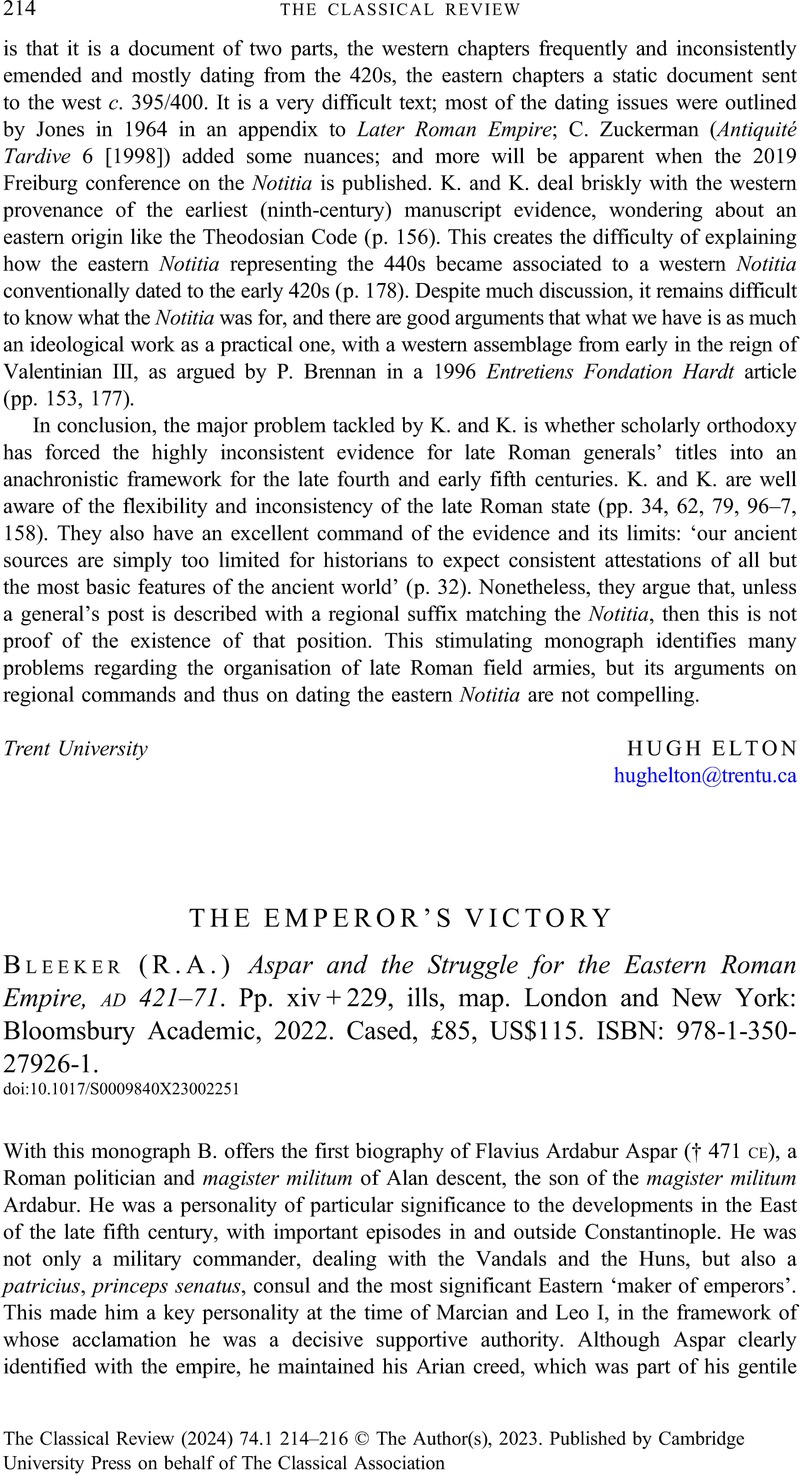No CrossRef data available.
Article contents
THE EMPEROR'S VICTORY - (R.A.) Bleeker Aspar and the Struggle for the Eastern Roman Empire, ad 421–71. Pp. xiv + 229, ills, map. London and New York: Bloomsbury Academic, 2022. Cased, £85, US$115. ISBN: 978-1-350-27926-1.
Review products
(R.A.) Bleeker Aspar and the Struggle for the Eastern Roman Empire, ad 421–71. Pp. xiv + 229, ills, map. London and New York: Bloomsbury Academic, 2022. Cased, £85, US$115. ISBN: 978-1-350-27926-1.
Published online by Cambridge University Press: 01 December 2023
Abstract
An abstract is not available for this content so a preview has been provided. Please use the Get access link above for information on how to access this content.

- Type
- Reviews
- Information
- Copyright
- Copyright © The Author(s), 2023. Published by Cambridge University Press on behalf of The Classical Association



